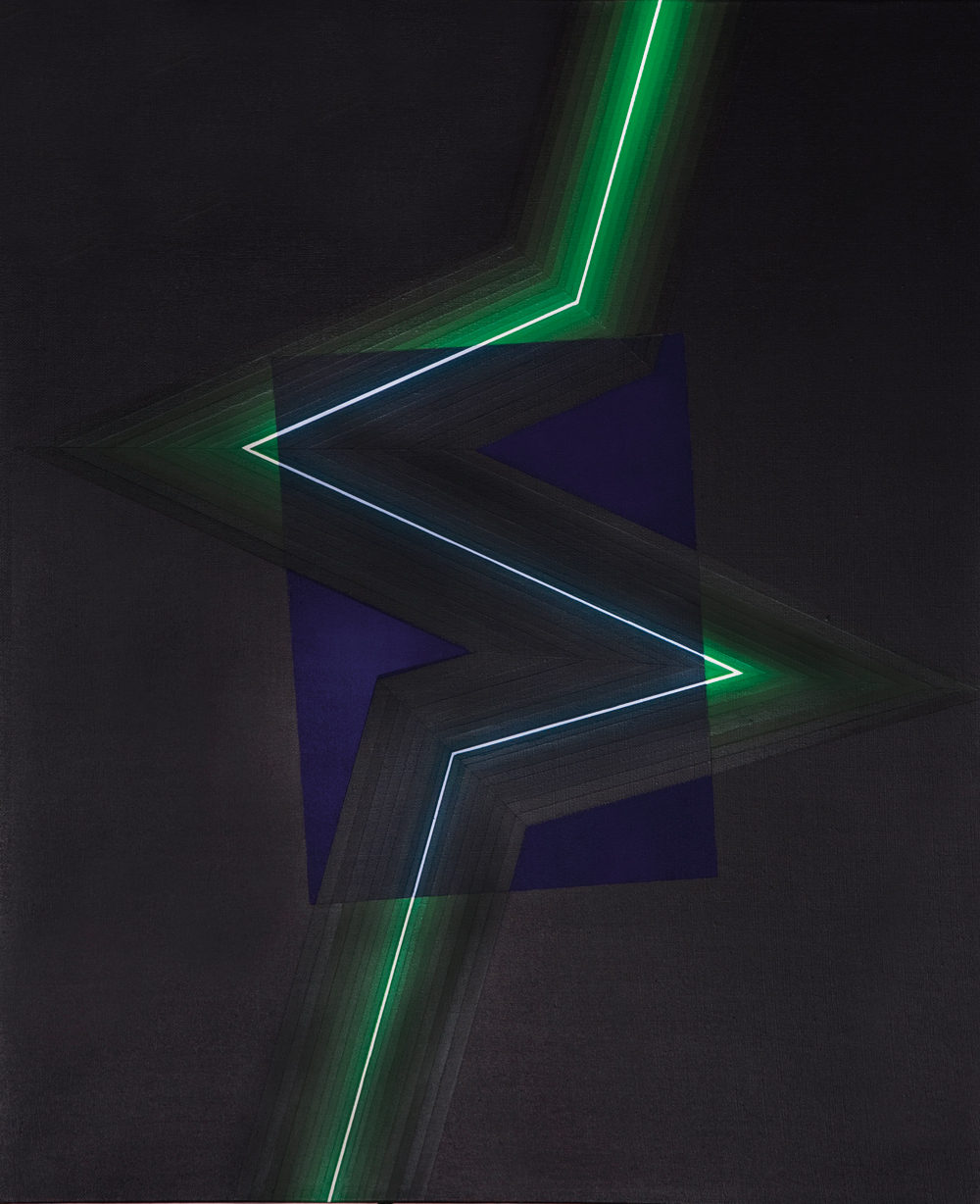« Reviews
L’Oeil Phénomène
Vasarely Foundation - Aix-en-Provence, France
By Raisa Clavijo
“L’ Oeil Phénomène” (The Eye Phenomenon) at the Vasarely Foundation revolves around the legacy of GRAV (Group de Recherches d’Art Visuel) and its influence on contemporary art. The exhibition assembles works by Horacio García Rossi, Julio Le Parc, François Morellet, Francisco Sobrino, Joël Stein and Jean-Pierre Yvaral. Also included is NOA (Nano Op Art), a piece by Michel Paysant that represents the first work of Op Art on a microscopic scale. NOA was created using gold on a sheet of silicon. The fabrication process utilizes electronic lithography to create geometric patterns that produce an optical illusion that can only be seen through the lens of a powerful microscope. The nano-images are smaller than the diameter of a hair. During the process of observation, a paradox is created since the work exists materially while at the same time appearing invisible to the naked eye.
All of the works are part of the collection of optical and kinetic art belonging to Lélia Mordoch and José Mijan. Both collectors have been key supporters of the members of GRAV for more than two decades, especially Mordoch through her galleries in Paris and Miami. She had the idea of producing, along with Paysant, NOA, a work in which the concept and optical illusion coincide.

Michel Paysant, Noa (nano optic art), 2014, gold deposit (91,24 x 82,71 microns) on silicon plate (2 inches). Courtesy of Galerie Lélia Mordoch.
GRAV was founded in 1961 and active until 1968. Morellet, Yvaral, García Rossi, Le Parc, Sobrino, Stein and Victor Vasarely were members of the group and signed its manifesto in 1961. From its inception, GRAV contributed enormously to determining the direction that optical and kinetic art would follow. Its philosophy, expressed in its manifesto, suggested that art should not be created to merely be seen by an informed viewer; rather, it should be destined to be appreciated by the human eye without the intervention of the interpretive conscience. The group based its work on constant experimentation with matter, light and movement. The members of GRAV experimented with all kinds of optical illusions based on the visual effect of a distortion of surfaces in that conflict between the static and dynamic that stimulates the human eye to continually generate forms. The group rejected the idea of the artist as an independent genius, advocating for collective creation as the basis for investigation and the incessant search for new, formal solutions.
A particularly interesting piece in the exhibition is Couleur lumière transparente (2002) by García Rossi. During the 1970s, García Rossi moved from the concrete use of luminous resources to a purely pictorial treatment of light. After numerous investigations regarding the process of human perception and experiments attempting to create a luminous sensation on two-dimensional surfaces, he started drawing a white line near others of a dark color, thus creating a kind of tonal degradation that produced on a visual level a sensation of light and movement. This is how his series of paintings “Couleur lumière” (Color-Light) came about, works in which both pictorial elements merge into an organic whole. Throughout his life he would take up and continue these series over and over again. With his “Couleur lumière,” García Rossi appears to expand the limits of the two-dimensional and the static condition of the pictorial support, leaving a legacy that would influence the work of many artists who would later dabble in optical and kinetic art.
“L’ Oeil Phénomène” offers up a careful selection of pieces that challenges the spectator to be a kind of co-creator of the work without needing to possess a cultural foundation or a prior visual repertoire.
(June 19 - September 20, 2015)
Raisa Clavijo is an art historian and writer based in Miami. She is the editor-in-chief of ARTPULSE and ARTDISTRICTS magazines.
Filed Under: Reviews




































Leave a Reply
You must be logged in to post a comment.